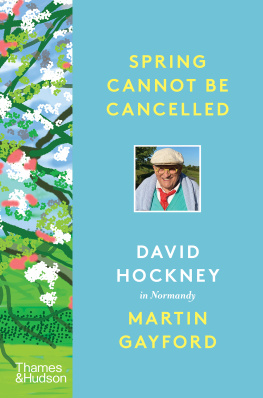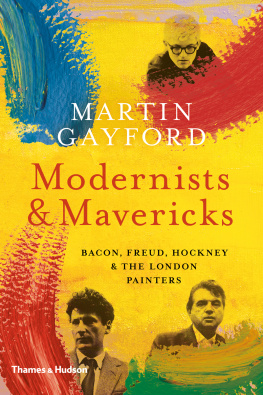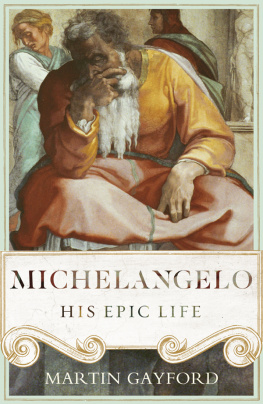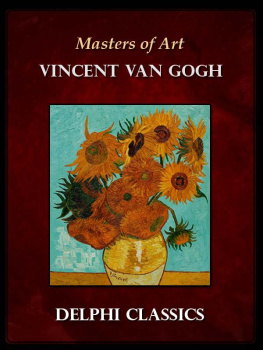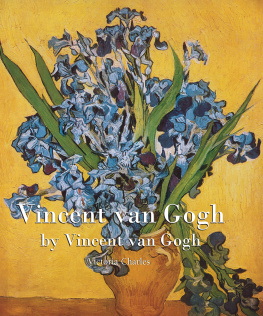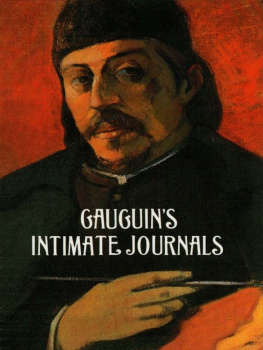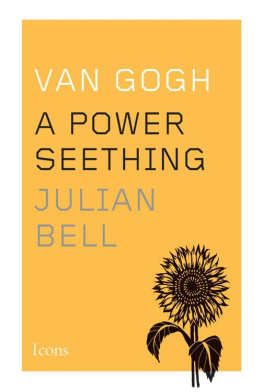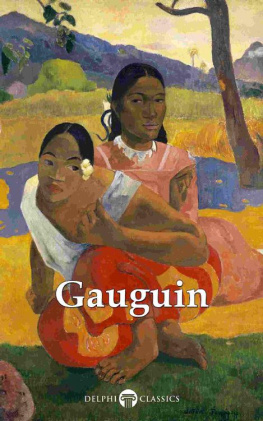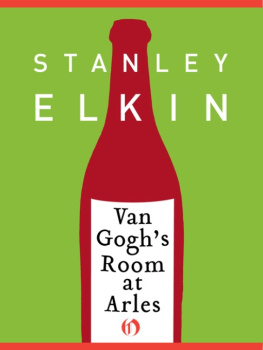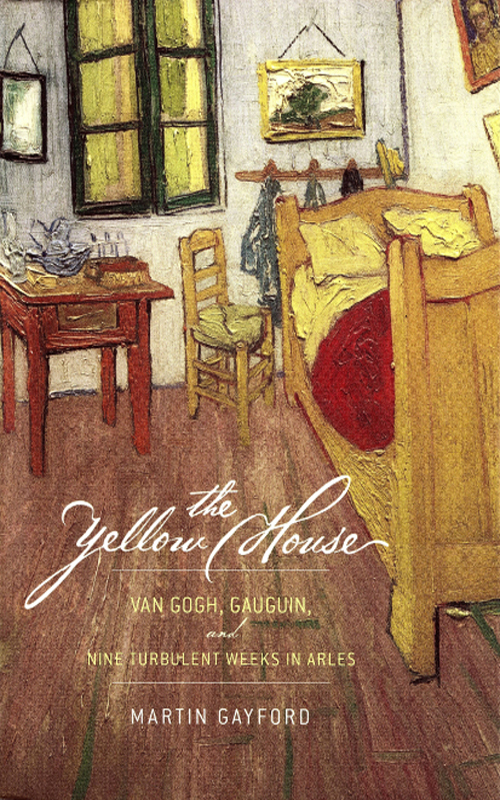Copyright 2006 by Martin Gayford
All rights reserved. No part of this book may be reproduced in any form or by any electronic or mechanical means, including information storage and retrieval systems, without permission in writing from the publisher, except by a reviewer who may quote brief passages in a review.
Little, Brown and Company
Hachette Book Group
237 Park Avenue
New York, NY 10017
Visit our website at www.HachetteBookGroup.com
www.twitter.com/littlebrown
First eBook Edition: October 2009
ISBN: 978-0-316-08720-9
Gayford deftly charts how the differences in temperament quickly became divisive, and his narrative shifts subtly from art history to psychological thriller.
MICHAEL PRODGER, TELEGRAPH ON SUNDAY
FROM OCTOBER TO DECEMBER OF 1888, Paul Gauguin shared a yellow house in the south of France with Vincent van Gogh. Never before or since have two such towering artists occupied so small a space. They were the Odd Couple of art historyone calm, the other volatileand the denouement of their living arrangement was explosive. Two months after Gauguin arrived in Provence, Van Gogh suffered a psychological crisis that culminated in his cutting off part of an ear. He was institutionalized for most of the rest of his short life and never saw Gauguin again.
During the brief, exhilarating period they worked together in Arles, these not-yet-famous artists created a stream of masterpieces within the shared studioincluding Van Goghs Sunflowers, which decorated Gauguins bedroom wall. Making use of new evidence and Van Goghs voluminous correspondence, Martin Gayford describes not only how these two hallowed artists painted and exchanged ideas, but also the texture of their everyday lives. He tells us what they cooked and how they budgeted their meager finances and entertained themselves, and he movingly relates their inner fears and dreams. Gayford also makes a persuasive analysis of Van Goghs mental illnessthe probable bipolar affliction that led him to commit suicide at the age of thirty-seven. The Yellow House is a singular biographical work, as dramatic and vibrant as the artists pictures.

MARTIN GAYFORD was educated at Cambridge University and the Courtauld Institute of the University of London. He is the coeditor of The Grove Book of Art Writing. Currently chief art critic for Bloomberg Europe, Gayford lives in Cambridge, England, with his wife and two children.
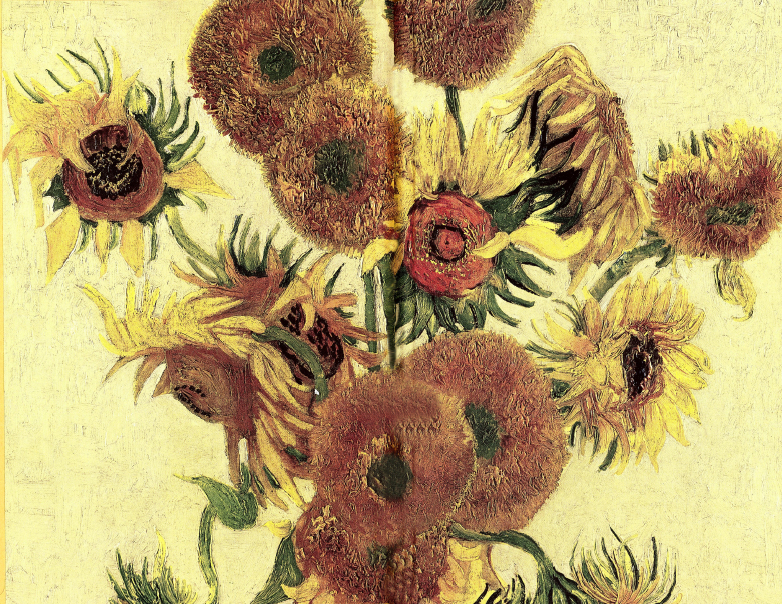
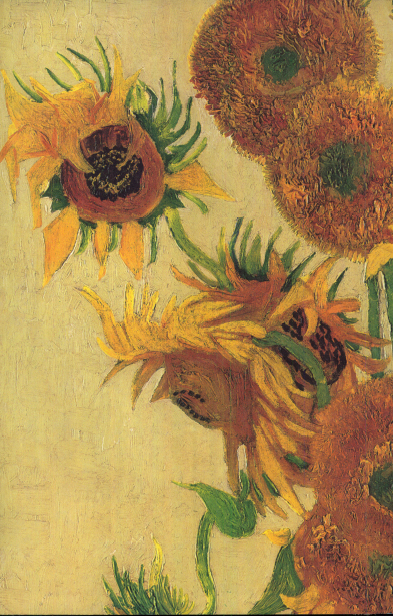
The Grove Book of Art Writing
(with Karen Wright, eds.)
To Josephine
Unless otherwise stated, works are by Van Gogh.
p. Gauguin, Self-Portrait Les MisrablesVan Gogh Museum, Amsterdam
p. Self-Portrait dedicated to Paul GauguinFogg Art Museum, Harvard
p. SunflowersNational Gallery, London
p. Sketch of Still Life with CoffeepotVan Gogh Museum, Amsterdam
p. The Yellow HouseVan Gogh Museum, Amsterdam
p. Night CafYale University Art Gallery, New Haven
p. Sketch of the Sower and the Old Yew Tree in letter 558bVan Gogh Museum, Amsterdam
p. Photograph of TheoVan Gogh Museum, Amsterdam
p. Gauguin, Vision of the SermonNational Galleries of Scotland
p. Photograph of GauguinMuse Gauguin, Papeari, Tahiti
p. Gauguin, Les AlyscampsMuse dOrsay, Paris
p. Alle des Tombeaux (Les Alyscamps)Private Collection
p. Falling LeavesPrivate Collection
p. Falling LeavesKrller-Mller Museum, Otterlo
p. Gauguin, Drawing of Madame GinouxFine Arts Museums of San Francisco
p. LArlsienneMuse dOrsay, Paris
p. Red VineyardPushkin Museum, Moscow
p. Gauguin, Human MiseriesOrdrupgaard, Copenhagen
p. Gauguin, Night CafPushkin Museum, Moscow
p. Brothel SceneThe Barnes Foundation, Merion, Pennsylvania
A Memory of the Garden, letter sketchVan Gogh Museum, Amsterdam
p. Gauguin, In the HeatPrivate Collection
p. Reader, letter sketchVan Gogh Museum, Amsterdam
p. Spectators at the ArenaHermitage, St. Petersburg
p. Gauguin, WasherwomenMuseo de Bellas Artes, Bilbao
p. Photograph of Gauguin in studioMuse Gauguin, Papeari, Tahiti
p. Van Goghs ChairNational Gallery, London
p. Gauguins ChairVan Gogh Museum, Amsterdam
p. Drawing: Reclining Nude, 1887Van Gogh Museum, Amsterdam
p. Road with Cypress and Star, letter sketchVan Gogh Museum, Amsterdam
p. Drawing: the Sower (June)Van Gogh Museum, Amsterdam
p. : The Sower, letter sketchVan Gogh Museum, Amsterdam
p. Gauguin, drawings of Police Commissioner from Arles SketchbookThe Israel Museum, Jerusalem
p. Gauguin, Madame RoulinSaint Louis Art Museum
p. Madame RoulinCollection Oskar Reinhardt, Winterthur, Switzerland
p. Drawing of RoulinLos Angeles County Museum, Los Angeles
p. Madame Roulin with Her Baby MarcellePhiladelphia Museum of Art, Philadelphia
p. Gauguin, drawings of Menagerie from Arles SketchbookThe Israel Museum, Jerusalem
p. Armand RoulinMuseum Folkwang, Essen
p. Camille RoulinVan Gogh Museum, Amsterdam
p. Photographs: Armand, Camille, Augustine and Marcelle RoulinVan Gogh Museum, Amsterdam
p. Sorrow, lithographVan Gogh Museum, Amsterdam
p. The Dance HallMuse dOrsay, Paris
p. Gauguin, ArlsiennesThe Art Institute of Chicago
p. Portrait of a ManKrller-Mller Museum, Otterlo
p. Gauguin, Portrait of a ManVan Gogh Museum, Amsterdam
p. Self-PortraitPrivate Collection
Gauguin, Self-PortraitNational Gallery of Art, Washington
p. Gauguin, Jottings from Arles SketchbookThe Israel Museum, Jerusalem
p. Gauguin, Painter of SunflowersVan Gogh Museum, Amsterdam
p. Portrait of GauguinVan Gogh Museum, Amsterdam
p. Delacroix, Aline, The Mulatto Woman (also known as Aspasie)Muse Fabre, Montpellier
p. Delacroix, Portrait of Alfred BruyasMuse Fabre, Montpellier
p. Courbet, MeetingMuse Fabre, Montpellier
p. Gauguin, Artists MotherStaatsgalerie, Stuttgart
p. La BerceuseMuseum of Fine Arts, Boston
p. Gauguin, Self-Portrait JugMuseum of Decorative Arts, Copenhagen
p. Self-Portrait with Bandaged EarCourtauld Gallery, London
p.
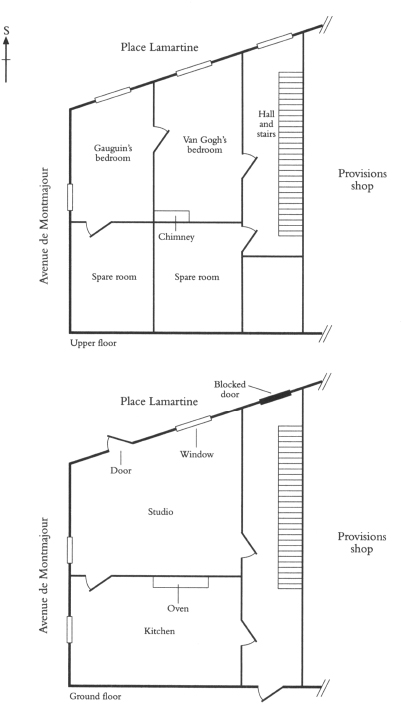
October 23, 1888
While it was still dark, shortly after five oclock in the morning, a train clanked into the station at Arles and a solitary, exhausted passenger got out. He had been traveling for nearly two days. His journey had begun the previous Sunday in Pont-Aven, near the Atlantic coast of Brittany, almost seven hundred miles away. Since then he had moved by stages from a damp, green region on the Atlantic coast to a flat plain near the point where the Rhne River met the Mediterranean.


